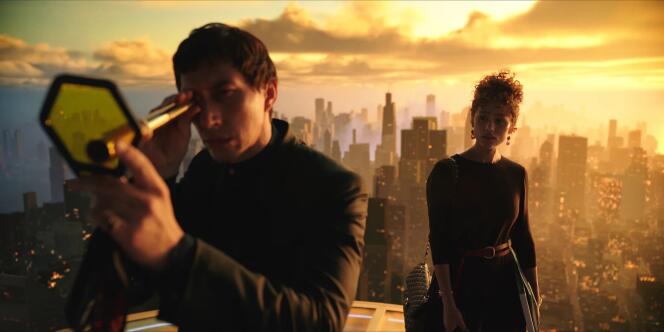OFFICIAL SELECTION – IN COMPETITION
One of Hollywood’s oldest sea serpents has finally lifted its head above water. Megalopolisundoubtedly the most anticipated film of this 77e Cannes edition, which marks the return after thirteen years (Twixt2011) by Francis Ford Coppola, tumultuous and legendary New Hollywood filmmaker, one of those who more than once risked everything and lost everything, was presented on the second day of competition.
It is a project that the author of Godfather (1972) and Dracula (1992) has been around for over forty years, envisaged at the turn of the 1970s-1980s in the wake ofApocalypse Now (1979), started then interrupted due to bankruptcy (the oven of Heart stroke in 1982), but which he never stopped mentioning. And for which he has just put, so to speak, his skin on the table, having financed it through the sale of part of his own vineyards, for a staggering budget of 120 million euros. At 85, the filmmaker, in the running for a third Palme d’Or, has followed his dream of grandeur to the end.
The resulting film is seriously disconcerting, especially if we expect from Coppola a final masterpiece like in the heyday. Megalopolis fits more naturally following its latest deliveries since The Ageless Man (2007), imperfect, shaky fictions, but always animated by a spirit of research, except that the imbalance here takes on the disproportionate proportions of a budget ten times greater.
The film immediately presents itself as an overflowing fresco, an incredible civilizational treatise on town planning, history, philosophy, politics, at the same time as a “pulp” soap opera driven at full speed, as if the filmmaker in the evening of his life had wanted to put everything there – his tastes, his ideas, his visions – all merged into a great baroque trip. The risk of overflow rubs shoulders with a gaping progression, full of holes, scenes that remain to be done, hasty articulations, sacrificed characters, which above all give the impression of a large open-air construction site – and the metaphor suits a film about urban planning.
Fall of empires
Coppola transposes into the American space a famous historical episode from ancient Rome, for which he has a long-standing obsession: the conspiracy of Catiline, where the ambition of a single man, an aspiring consul, almost undermined all the Republic during the reign of Cicero.
In the city of New Rome – an alternative New York of the 21st centurye century – a dispute pits visionary architect César Catilina (Adam Driver) against incumbent mayor Franklyn Cicero (Giancarlo Esposito) over land use planning. The first, a daring entrepreneur whose individualist model could be The rebel (1949), by King Vidor, inventor of a revolutionary material called “megalon”, would like to bring out from a neighborhood in the process of being demolished the city of the future, a living network inspired by natural forms. The other, a failed politician who is losing ground, accused of creating debt, plays ordinary demagoguery and favors private interests.
You have 52.81% of this article left to read. The rest is reserved for subscribers.
